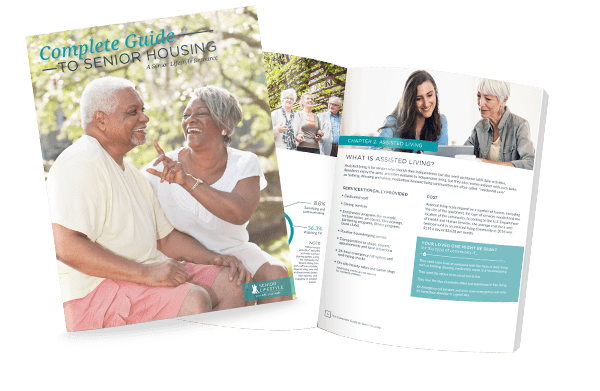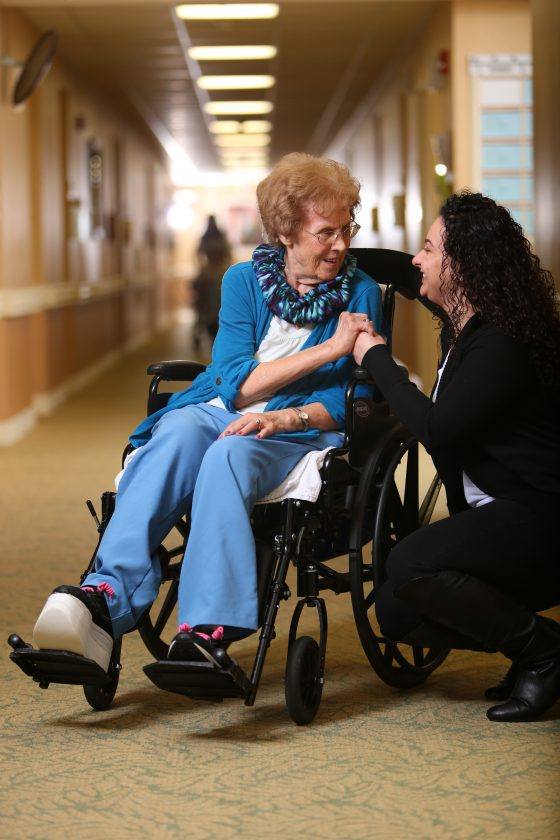Trying to decide whether or not it’s time to transition your parent or senior loved one to an assisted living community can be uncomfortable at best and stressful at worst, especially if they’re resistant to the idea. What factors should you take into account? Are there any red flags that you should know about? If you encounter any of the signs discussed below, it may be time to initiate this conversation.
Here are seven signs that it’s time to move into an assisted living community:
1. Poor Health That’s Just Getting Worse
A chronic health condition that’s deteriorating by the day is a red flag. According to the National Council on Aging, 80 percent of older adults suffer from at least one chronic disease and 77 percent have two or more conditions. These numbers are especially troubling when you consider the fact that most deaths in the United States are due to chronic illnesses.
Rather than trying to manage your loved one’s declining health on your own, it may be time escalate their care needs and partner with a team of trained team members who are dedicated the wellbeing of their charges.
2. Changes in Hygiene
If you’ve noticed changes in your loved one’s personal hygiene — like unpleasant body odor, greasy, unkempt hair or dirty fingernails that are too long, broken or jagged — this is a cause for concern. Poor hygiene could be due to self-neglect. The National Adult Protective Services Association defines self-neglect as “a person’s inability, due to physical or mental impairment or diminished capacity, to perform essential self-care tasks.”
Other warning signs of self-neglect include:
- Refusal to take medications or poor management of medication regimen
- Signs of weight loss, malnutrition or dehydration
- No food, inadequate food or rotten food in the house
- Unsanitary living conditions
- Signs of unopened mail and notices
- Non-functioning utilities or utilities that are shut off
If you notice these warning signs you should think through the best way to intervene self-neglect is a risk factor for early mortality among the elderly. Self-neglectors are twice as likely to die as seniors who do not self-neglect.
3. Isolation
Just like self-neglect, social isolation is a risk factor for early mortality. Older adults with few social ties who live alone, are hearing impaired, or who have mobility issues may become isolated due to their circumstances. Seniors may also intentionally isolate themselves, but the consequences are the same.
Isolation is also associated with cognitive decline, chronic diseases and dementia. It’s been linked to poor health conditions like high blood pressure, cancer and cardiovascular disease.
According to AARP, signs of isolation include withdrawal, loss of interest in personal hygiene, poor nutrition and poor living conditions and hoarding.

Download The Complete Guide to Senior Housing
Every senior has their own set of wants and needs, so retirement communities offer differing levels of care, services, and amenities. Read our eBook for a detailed look at what retirement communities provide.
Download the Guide
4. Safety Concerns
If your loved one is having trouble navigating the stairs in their home or there have been instances of forgetfulness and wondering that caught your attention, they may no longer be safe on their own. The National Council On Aging reports that every 11 seconds an older adult is treated for a fall in an emergency room. Furthermore, falls are the leading cause of injury deaths and brain injuries in America, making this a major safety concern.
Furthermore, an impaired memory could be an indication of a more serious health problem.
5. Increasing Difficulty Managing Daily Tasks
Is your loved one having trouble performing daily tasks like cooking food? Do they just have TV dinners or snack foods in the house and no fresh food? Or maybe they look disheveled and seem to be struggling with grooming and dressing themselves?
They might not be managing very well if:
- They forget to take their medication
- They’ve lost weight
- Their pets appear neglected and malnourished
- They can no longer drive or fail to keep their appointments
If mental or physical limitations are hampering their ability to take care of themselves properly, they might need some help. Nearly 18 million older adults have reported needing help with daily activities, so they wouldn’t be alone in this.
6. Trouble Keeping Up with Bills
This red flag could relate to forgetfulness and memory loss, self-neglect or elder financial exploitation. The National Adult Protective Services Association reports that seniors with cognitive impairments who need assistance with daily activities are more vulnerable to financial abuse. They typically fall victim to predatory lending, investment schemes, internet phishing, identity theft and Medicare scams. If you suspect that your loved one is being scammed, you can report it to the Department of Justice.
Either way, investigating the cause of this issue will help you determine whether or not it’s a cause for concern.
7. Inability to Properly Care For Home
A home that’s in disrepair with an unkempt lawn, or a cluttered home that’s difficult to navigate and bordering on uninhabitable are a cause for concern. Particularly when these issues become safety concerns and your loved one is at risk of being burglarized due to the state of the home. Hazards in the home also make it difficult to enlist the help of a home care service. According to Advances in Patient Safety: New Directions and Alternative Approaches, the following hazards impede caregivers from performing their duties:
- Unsanitary conditions such as rodents and insects
- Air pollutants such as mold and peeling paint
- Excessive clutter
- Poor lighting
Visit a Senior Lifestyle Community
At Senior Lifestyle we know how sensitive having a conversation about transitioning to assisted living can be, which is why we take a compassionate approach when working with families. We strive to ease any tension as we guide you through the process, sharing our senior lifestyle options and determining what the best fit for your.
We encourage families to visit our communities and offer opportunities to visit. Come and explore our senior-focused amenities and care programs. Meet our team members and ask them questions about what like is like at a Senior Lifestyle Community. Schedule a tour at a community near you today.

